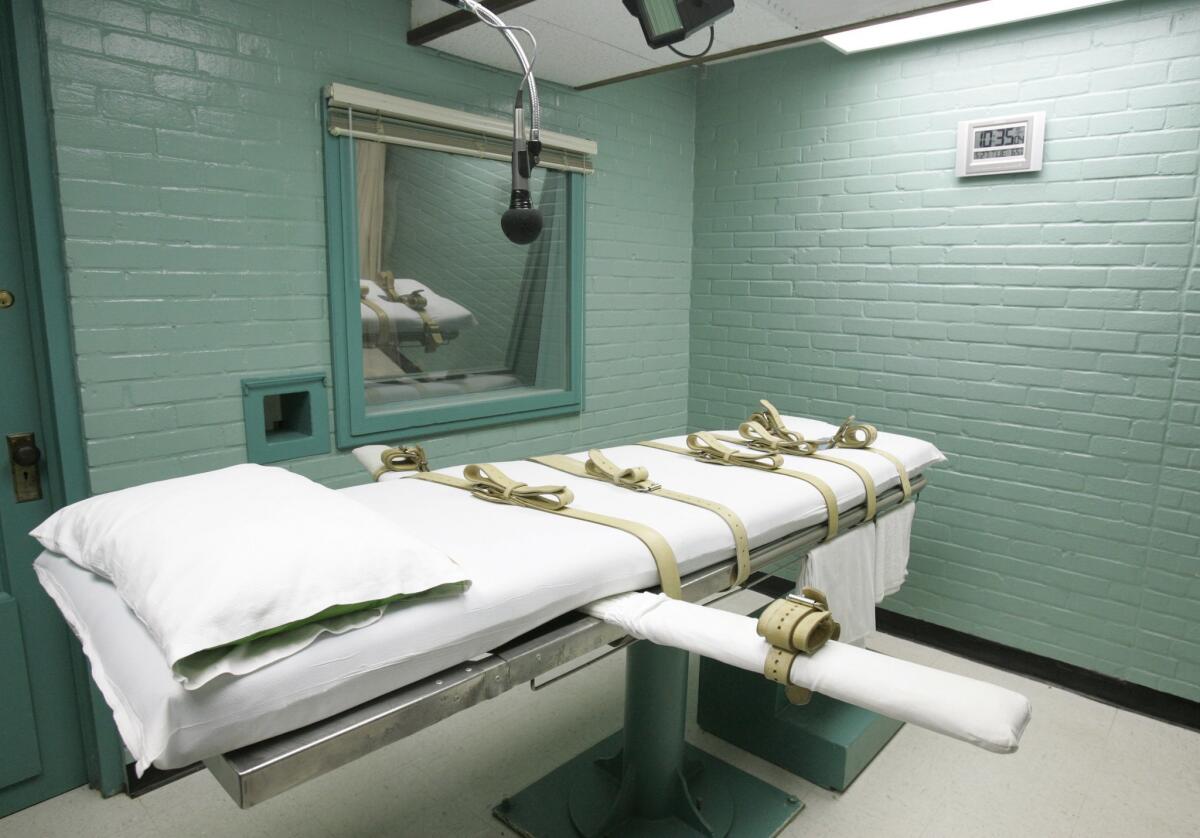Editorial: A Texas man is due to die because he’s black

- Share via
Duane Buck was convicted in 1997 of murdering his ex-girlfriend and a male friend. After a Texas jury determined that he was likely to pose a continuing danger to society, it sentenced him to death. How did the jury conclude that he posed a future threat (a finding that state law requires as a condition for imposing the death penalty)? Simple: Buck is black and, according to a psychologist who testified at the sentencing hearing, race is one of a number of “statistical factors” that can be used to predict whether a person will reoffend in the future.
But it’s simply untrue that an individual’s race is a reliable indicator of his future danger to society; when you adjust for other risk factors, such as prior convictions, age, unemployment and education, race plays an insignificant role if any in predicting an offender’s future. Five other men sentenced to death based in part on similar testimony by the same psychologist were granted fresh sentencing hearings. But Buck’s original death sentence still stands. Why? Because his lawyers violated court procedures when they filed his appeal.
A man was sentenced to death at least in part because of his race -- a violation of his constitutional rights.
Buck’s current lawyers argue that Buck’s problems began when his trial attorney (who they say was incompetent) called psychologist Walter Quijano as a witness, and then failed to object to the highly questionable testimony. A different lawyer subsequently appealed Buck’s conviction, but didn’t raise the issue of race or Quijano’s theory. The state of Texas later acknowledged that similar testimony by Quijano in an unrelated trial was unconstitutional, but when it agreed to new sentencing hearings for the similarly situated defendants, it did not do so for Buck. His lawyers filed an appeal, but the courts ruled that because the original appeal didn’t include the race issue, Buck couldn’t now introduce it in a late stage of the legal process.
No one involved in the case suggests that Buck was wrongfully convicted. But it is morally unacceptable to put a man to death for a procedural mistake (such as missing a simple filing deadline or, as in this case, for his lawyers’ incompetence).
The state of Texas agrees that unconstitutional testimony was introduced at the trial, but has argued that the testimony and the caliber of Buck’s legal counsel don’t constitute the kind of “extraordinary circumstances” under which Buck would be allowed to proceed.
That’s an unacceptable answer. A man was sentenced to death at least in part because of his race — a violation of his constitutional rights — and is now being denied the ability to challenge that miscarriage of justice because of bad counsel and a procedural technicality. If those don’t constitute “extraordinary circumstances,” then what does?
Buck has asked the Supreme Court to let him pursue his appeal. The court, which is expected to decide later this month whether to hear his case, should grant him a hearing to ensure that adherence to process doesn’t trump justice and common sense.
Follow the Opinion section on Twitter @latimesopinion and Facebook.
MORE FROM OPINION
Why erasing California’s anti-Semitic, racist history from public display is the wrong move
The downfall of Paul Tanaka and the collapse of the blue wall of silence
How do we prevent the California primary from becoming another Arizona?
More to Read
A cure for the common opinion
Get thought-provoking perspectives with our weekly newsletter.
You may occasionally receive promotional content from the Los Angeles Times.






